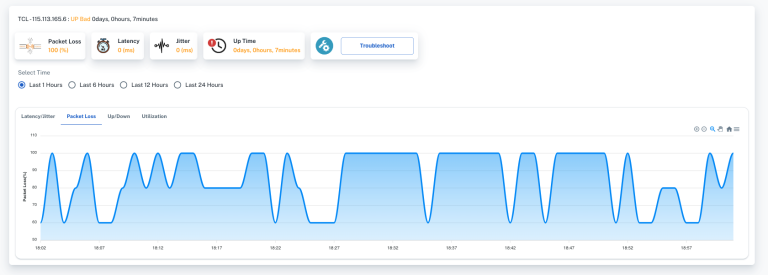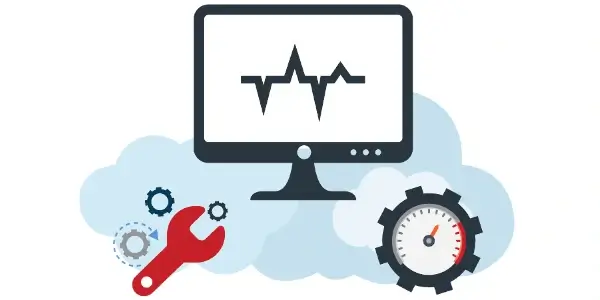When monitoring the reliability and quality of an Internet connection, there are several important parameters to consider. Here we have explained them in detail.
- Availability/Uptime: This metric refers to the percentage of time that the link or the internet connection is available and functioning properly. It is important to monitor uptime to ensure that the internet connection’s availability meets our needs. If the uptime percentage is low, then it indicates that the Internet service is of poor quality.
- Latency: Also known as RTT ( Round Trip Time ) this parameter measures the time it takes for data to travel from one point to another on the internet. Monitoring response time helps to ensure that the internet connection is fast and responsive. High latency indicates that there is a certain problem in the path of the packet from source to destination or vice-versa. High latency leads to slow browsing speed, websites taking longer time to load, poor experience of SaaS applications like o365 or Dropbox, choppy video calls, etc.
- Packet Loss: Packet loss occurs when data packets are lost during transmission. Packet Loss is measured in %. It is the % of packets lost during the transmission. TCP applications are slightly more resilient to packet loss, as they have a packet re-transmission mechanism built-in. However UDP- based applications such as VOIP applications are very sensitive to packet loss issues. Hence monitoring packet loss metric helps to identify issues with the internet connection that may be affecting its performance and take corrective actions.
- Jitter: Jitter is the variation in the delay of received packets. When the packets arrive at the destination in the wrong order, the receiving applications may not be able to reconstruct the original message in time. Again UDP or VOIP kind of applications are more sensitive to Jitter. Hence monitoring jitter is crucial.
- Bandwidth Usage: Real-time bandwidth usage is nothing but the actual consumption of the link capacity. Tracking Real-Time bandwidth usage of the internet link helps to understand the capacity-related issues such as bursts of traffic during peak application usage. These bursts in traffic may lead to choking of the link and packet drops. It would also help you to track if you are reaching the maximum throughput of the link and take corrective measures to buy more bandwidth.
By monitoring these parameters, you can identify and troubleshoot issues with the internet connection before they become major problems for the end users, optimise network performance, and ensure that the internet connection is reliable and available when it is needed.
















